Herbie Hancock
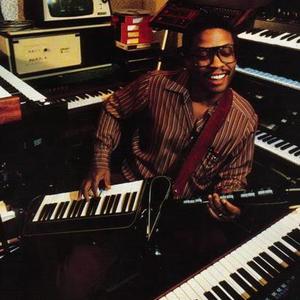
- Genres:
- Electronic, Jazz, R&B
- Meta styles:
- Fusion, Hard Bop, Jazz Instrument, Soul, Soul Jazz/Groove, Techno
- Styles:
- Electro, Funk, Fusion, Hard Bop, Jazz-Funk, Modal Music, Piano Jazz, Post-Bop
Herbert Jeffrey Hancock (born April 12, 1940) is a jazz pianist and composer from Chicago, Illinois, United States. Hancock is one of jazz music's most important and influential pianists and composers. He embraced elements of rock, funk, and soul while adopting freer stylistic elements from jazz. As part of Miles Davis' "second great quintet" Hancock helped redefine the role of a jazz rhythm section, and was later one of the first jazz musicians to embrace synthesizers and jazz funk.
As part of Miles Davis' "second great quintet" Hancock helped redefine the role of a jazz rhythm section, and was later one of the first jazz musicians to embrace synthesizers and jazz funk. Yet for all his restless experimentation, Hancock's music is often melodic and accessible; he has had many songs "crossover" and achieve success among pop audiences.
Probably the most influential era in Herbie Hancock's extensive career is with the "Headhunters" ensemble during the mid-late 70's, including (among others) Paul Jackson on bass, Bennie Maupin on saxophones, Harvey Mason on drums, "Wah Wah" Watson on guitar and Bill Summers on percussion.
His 2007 tribute album, River: The Joni Letters won the 2008 Grammy Award for Album of the Year.
Early life and career
Like many jazz pianists, Hancock started with a classical music education; Hancock studied from age seven. His talent was recognized early, and he played the first movement of Mozart's Piano Concerto No. 5 at a young people's concert with the Chicago Symphony at age eleven.[1]
Through his teens, Hancock never had a jazz teacher. Instead, around high school age, Hancock grew to like jazz after hearing some Oscar Peterson and George Shearing recordings, which he transcribed in his own time, and which developed his ear and sense of harmony. He was also influenced by records of the vocal group the Hi-Lo's:
..by the time I actually heard the Hi-Lo's, I started picking that stuff out; my ear was happening. I could hear stuff and that's when I really learned some much farther-out voicings -like the harmonies I used on 'Speak Like a Child' -just being able to do that. I really got that from Clare Fischer's arrangements for the Hi-Lo's. Clare Fischer was a major influence on my harmonic concept... He and Bill Evans, and Ravel and Gil Evans, finally. You know, that's where it really came from. Almost all of the harmony that I play can be traced to one of those four people and whoever their influences were.[2]
Hancock also listened to other pianists, including Don Goldberg (also a prodigy and a Hyde Park High School classmate), McCoy Tyner, and Wynton Kelly, and studied recordings by Miles Davis, John Coltrane and Lee Morgan.
Hancock began his studies as a physics major at Grinnell College, but switched to music after two years. In 1960, he heard Chris Anderson play just once, and begged him to accept him as a student [1]. Hancock often mentions Anderson as his harmonic guru. Hancock left Grinnell one course short of graduation in 1961, moved to Chicago and began working with Donald Byrd and Coleman Hawkins, during which period he also took courses at Roosevelt University. (Grinnell awarded Hancock an honorary Doctor of Fine Arts degree in 1972).[1][3] Donald Byrd was attending Manhattan School of Music in New York at the time and suggested that Hancock study composition with Vittorio Giannini, which he did for a short time in 1960. The pianist quickly earned a reputation, and played subsequent sessions with Oliver Nelson and Phil Woods. He recorded his first solo album Takin' Off for Blue Note Records in 1962. "Watermelon Man" (from Takin' Off) was to provide Mongo Santamaria with a hit single, but crucially Takin' Off was to catch the attention of Miles Davis, who was at that time assembling a new band. Hancock was introduced to Davis by the young drummer Tony Williams, a member of the new band.
Miles Davis quintet and Blue Note
Hancock received considerable attention when, in May 1963,[1] he joined Miles Davis' "second great quintet." This new band was essentially Miles Davis surrounded by fresh, new talent. Davis personally sought out Hancock, whom he saw as one of the most promising talents in jazz. The rhythm section Davis organized was young but effective, comprising bassist Ron Carter, seventeen year old drummer Tony Williams, and Hancock on piano. After George Coleman and Sam Rivers each taking turns at the saxophone spot, the quintet would gel with Wayne Shorter on tenor saxophone. This quintet is often regarded as one of the finest jazz ensembles, and the rhythm section has been especially praised for its innovation and flexibility.
The second great quintet was where Hancock found his own voice as a pianist. Not only did he find new ways to use common chords, he also popularized chords then rarely used in jazz. Hancock also developed a unique taste for "orchestral" accompaniment - using fourths and Debussy-like harmonies, with stark contrasts then unheard of in jazz.
With Williams and Carter he would weave a labyrinth of rhythmic intricacy on, around and over existing melodic and chordal schemes. In the later half of the sixties their approach would be so sophisticated and unorthodox that conventional chord changes would hardly be discernible, hence their improvisational concept would become known as "Time, No Changes."
While in the Davis band, Hancock also found time to record dozens of sessions for the Blue Note label, both under his own name and as a sideman with other musicians such as Wayne Shorter, Tony Williams, Grant Green, Bobby Hutcherson, Sam Rivers, Donald Byrd, Kenny Dorham, Hank Mobley, Lee Morgan and Freddie Hubbard.
His albums Empyrean Isles (1964) and Maiden Voyage (1965) were to be two of the most famous and influential jazz LPs of the sixties, winning praise for both their innovation and accessibility (the latter demonstrated by the subsequent enormous popularity of the Maiden Voyage title track as a jazz standard, and by the jazz rap group US3 having a hit single with "Cantaloop" (derived from "Cantaloupe Island" on Empyrean Isles) some twenty five years later). Empyrean Isles featured the Davis rhythm section of Hancock, Carter and Williams with the addition of Freddie Hubbard on cornet, while Maiden Voyage also added former Davis saxophonist George Coleman (and had Freddie Hubbard on trumpet). Both albums are regarded as among the principal foundations of the post-bop style. Hancock also recorded several less-well-known but still critically acclaimed albums with larger ensembles ? My Point of View (1963), Speak Like a Child (1968) and The Prisoner (1969) featured flugelhorn, alto flute and bass trombone. 1963's Inventions and Dimensions was an album of almost entirely improvised music, teaming Hancock with bassist Paul Chambers and two Latin percussionists, Willie Bobo and Osvaldo Martinez.
During this period, Hancock also composed the score to Michelangelo Antonioni's film Blowup which was to be the first of many soundtracks he would record in his career.
Davis had begun incorporating elements of rock and popular music into his recordings by the end of Hancock's tenure with the band. Despite some initial reluctance, Hancock began doubling on electric keyboards including the Fender Rhodes electric piano at Davis's insistence. Hancock adapted quickly to the new instruments, which proved to be instrumental in his future artistic endeavors.
Under the pretext that Hancock returned late from a honeymoon in Brazil, he was kicked out of Davis' band. So in the summer of 1968 Hancock formed his own sextet. (Davis would soon disband his quintet to search for a new sound.) Hancock though, despite his departure from the working band, continued to appear on Miles Davis records for the next few years. Noteworthy appearances include In a Silent Way, A Tribute to Jack Johnson and On the Corner.
Fat Albert and Mwandishi
Hancock left Blue Note in 1969, signing up with Warner Bros. Records. In 1969, Hancock composed the soundtrack for the Bill Cosby TV show Fat Albert and the Cosby Kids. Titled Fat Albert Rotunda, the album was mainly an R&B-influenced album with strong jazz overtones. One of the jazzier songs on the record, "Tell Me A Bedtime Story", was later re-worked as a more electronic sounding song for the Quincy Jones album, Sounds...and Stuff Like That.
Hancock was fascinated with accumulating musical gadgets and toys. Together with the profound influence of Davis's Bitches Brew, this fascination would culminate in a series of albums in which electronic instruments are coupled with acoustic instruments.
Hancock's first ventures into electronic music started with a sextet comprising Hancock, bassist Buster Williams and drummer Billy Hart, and a trio of adventurous horn players: Eddie Henderson (trumpet), Julian Priester (trombone), and multireedist Bennie Maupin. Dr. Patrick Gleeson was eventually added to the mix to play and program the synthesizers. In fact, Hancock was one of the first jazz pianists to completely embrace electronic keyboards.
The sextet, later a septet with the addition of Gleeson, made three experimental albums under Hancock's name: Mwandishi (1971), Crossings (1972) (both on Warner Bros. Records), and Sextant (1973) (released on Columbia Records); two more, Realization and Inside Out, were recorded under Henderson's name with essentially the same personnel. The music often had very free improvisations and showed influence from the electronic music of some contemporary classical composers.
Synthesizer player Patrick Gleeson, one of the first musicians to play synthesizer on any jazz recording, introduced the instrument on Crossings, released in 1972, one of a handful of influential electronic jazz/fusion recordings to feature synthesizer that same year. On Crossings (as well as on I Sing the Body Electric), the synthesizer is used more as an improvisatory global orchestration device than as a strictly melodic instrument. This reflected Gleeson's (and Powell's) interest in contemporary European electronic music techniques and in the West Coast synthesis techniques of Morton Subotnick and other contemporaries, several of whom were resident at one time or another, as was Gleeson, at The Mills College Tape Music Center. An early review of Crossings in Downbeat magazine complained about the synthesizer, but a few years later the magazine noted in a cover story on Gleeson that he was "a pioneer" in the field of electronics in jazz. Gleeson used a modular Moog III for the recording of the album, but used an ARP 2600 synthesizer, and occasionally an Arp Soloist for the group's live performances. On Sextant Gleeson used the more compact ARP synthesizers instead of the larger Moog III for both studio and live performances. In the albums following The Crossings, Hancock started to play synth himself and unlike Gleeson, he plays it as a melodical and rhythm instrument just like electric pianos.
Hancock's three records released in 1971-1973 became later known as the "Mwandishi" albums, so-called after a Swahili name Hancock sometimes used during this era (Mwandishi is Swahili for writer). The first two, including Fat Albert Rotunda were made available on the 2-CD set Mwandishi: the Complete Warner Bros. Recordings, released in 1994, but are now sold as individual CD editions. Of the three electronic albums, Sextant is probably the most experimental since the Arp synthesizers are used extensively, and some advanced improvisation ("post-modal free impressionism") is found on the tracks "Hornets" and "Hidden Shadows" (which is in the meter 19/4). "Hornets" was later revised on the 2001 album Future2Future as "Virtual Hornets."
Among the instruments Hancock and Gleeson used were Fender Rhodes piano, ARP Odyssey, ARP 2600, ARP Pro Soloist Synthesizer, a Mellotron and the Moog III.
All three Warner Bros. albums Fat Albert Rotunda, Mwandishi, and Crossings, were remastered in 2001 and released in Europe but were not released in the U.S.A. as of June 2005. In the Winter of 2006-2007 a remastered edition of Crossings was announced and scheduled for release in the Spring.
Head Hunters and Death Wish
See also: The Headhunters
After the sometimes "airy" and decidedly experimental "Mwandishi" albums, Hancock was eager to perform more "earthy" and "funky" music. The Mwandishi albums ? though these days seen as respected early fusion recordings ? had seen mixed reviews and poor sales, so it is probable that Hancock was motivated by financial concerns as well as artistic restlessness. Hancock was also bothered by the fact that many people did not understand avant-garde music. He explained that he loved funk music, especially Sly Stone's music, so he wanted to try to make funk himself.
He gathered a new band, which he called The Headhunters, keeping only Maupin from the sextet and adding bassist Paul Jackson, percussionist Bill Summers, and drummer Harvey Mason. The album Head Hunters, released in 1973, was a major hit and crossed over to pop audiences, though it prompted criticism from some jazz fans. Head Hunters was recorded at Different Fur studios.
Despite charges of "selling out", later ears have regarded the album well: "Head Hunters still sounds fresh and vital three decades after its initial release, and its genre-bending proved vastly influential on not only jazz, but funk, soul, and hip-hop." Allmusic.com entry
Mason was replaced by Mike Clark, and the band released a second album, Thrust, the following year. (A live album from a Japan performance, consisting of compositions from those first two Head Hunters releases was released in 1975 as Flood. The record has since been released on CD in Japan.) This was almost as well-received as its predecessor, if not attaining the same level of commercial success. The Headhunters made another successful album (called Survival of the Fittest) without Hancock, while Hancock himself started to make even more commercial albums, often featuring members of the band, but no longer billed as The Headhunters. The Headhunters reunited with Hancock in 1998 for Return of the Headhunters, and a version of the band (featuring Jackson and Clark) continues to play live and record.
In 1973, Hancock composed his second masterful soundtrack to the controversial film The Spook Who Sat By The Door. Then in 1974, Hancock also composed the soundtrack to the first Death Wish film. One of his memorable songs, "Joanna's Theme", would later be re-recorded in 1997 on his duet album with Wayne Shorter 1 + 1.
Hancock's next jazz-funk albums of the 1970s were Man-Child (1975), and Secrets (1976), which point toward the more commercial direction Hancock would take over the next decade. These albums feature the members of the 'Headhunters' band, but also a variety of other musicians in important roles.
Back to the Basics: VSOP and the Future Shock
During late 1970s and early 1980s, Hancock toured with his "V.S.O.P." quintet, which featured all the members of the 1960s Miles Davis quintet except Davis, who was replaced by trumpet giant Freddie Hubbard. There was constant speculation that one day Davis would reunite with his classic band, but he never did so. VSOP recorded several live albums in the late 1970s, including VSOP (1976), and VSOP: The Quintet (1977). One of his songs, "Clutch", which was recorded in studio in 1980, was featured on the 2001 anime movie Cowboy Bebop: The Movie and its soundtrack Future Blues.
In 1978, Hancock recorded a duet with Chick Corea, who had replaced him in the Miles Davis band a decade earlier. He also released a solo acoustic piano album titled The Piano (1978), which, like so many Hancock albums at the time, was initially released only in Japan. (It was finally released in the US in 2004.) Several other Japan-only releases have yet to surface in the US, such as Dedication (1974), VSOP: Tempest in the Colosseum (1977), and Direct Step (1978). Live Under the Sky was a VSOP album remastered for the US in 2004, and included an entire second concert from the July 1979 tour.
From 1978-1982, Hancock recorded many albums consisting of jazz-inflected disco and pop music, beginning with Sunlight (featuring guest musicians like Tony Williams and Jaco Pastorius on the last track) (1978). Singing through a vocoder, he earned a British hit, "I Thought It Was You", although critics were unimpressed. [2]. This led to more vocoder on the 1979 follow-up, Feets, Don't Fail Me Now, which gave him another UK hit in "You Bet Your Love." Albums such as Monster (1980), Magic Windows (1981), and Lite Me Up (1982) were some of Hancock's most criticized and unwelcomed albums, the market at the time being somewhat saturated with similar pop-jazz hybrids from the likes of former bandmate Freddie Hubbard. Hancock himself had quite a limited role in some of those albums, leaving singing, composing and even producing to others. Mr. Hands (1980) is perhaps the one album during this period that was critically acclaimed. To the delight of many fans, there were no vocals on the album, and one track featured Jaco Pastorius on bass. The album contains a wide variety of different styles, including a disco instrumental song, a Latin-jazz number and an electronic piece in which Hancock plays alone with the help of computers.
Hancock also found time to record more traditional jazz whilst creating more commercially-oriented music. He toured with Tony Williams and Ron Carter in 1981, recording Herbie Hancock Trio, a five-track live album released only in Japan. A month later, he recorded Quartet with Wynton Marsalis, released in the US the following year.
In 1983, Hancock had a mainstream hit with the Grammy-award winning instrumental single "Rockit" from the album Future Shock. It was perhaps the first mainstream single to feature scratching, and also featured an innovative animated music video which was directed by Godley and Creme and showed several robot-like artworks by Jim Whiting. The video was a hit on MTV. The video won 5 different categories at the inaugural MTV Video Music Awards, including the category for Video of the Year. This single ushered in a collaboration with noted bassist and producer Bill Laswell. Hancock experimented with electronic music on a string of three LPs produced by Laswell: Future Shock (1983), Sound-System (1984) and Perfect Machine (1988). Despite the success of "Rockit", Hancock's trio of Laswell-produced albums (particularly the latter two) are among the most critically derided of his entire career, perhaps even more so than his erstwhile pop-jazz experiments. Hancock's level of actual contribution to these albums was also questioned, with some critics contending that the Laswell albums should have been labelled "Bill Laswell featuring Herbie Hancock."
During this period, he appeared onstage at the Grammy awards with Stevie Wonder, Howard Jones, and Thomas Dolby, in a famous synthesizer jam (the video on youtube ). Lesser known works from the 80s are the live album Jazz Africa and the studio album Village Life (1984) which were recorded with Gambian kora player Foday Musa Suso. [3] Also, in 1985 he performed as a guest on the album So Red The Rose by the Duran Duran shoot off group Arcadia. He also provided introductory and closing comments for the PBS rebroadcast in the United States of the BBC educational series from the mid-1980s, Rock School (not to be confused with the most recent Gene Simmons' Rock School series).
In 1986, Hancock performed and acted in the film 'Round Midnight. He also wrote the score/soundtrack, for which he won an Academy Award for Original Music Score. Often he would write music for TV commercials. "Maiden Voyage", in fact, started out as a cologne advertisement. At the end of the Perfect Machine tour, Hancock decided to leave Columbia Records after a 15-plus-year relationship.
As of June 2005, almost half of his Columbia recordings have been remastered. The first three US releases, Sextant, Head Hunters and Thrust as well as the last four releases Future Shock, Sound-System, the soundtrack to Round Midnight and Perfect Machine. Everything released in America from Man-Child to Quartet has yet to be remastered. Some albums, made and initially released in the US, were remastered between 1999 and 2001 in other countries such as Magic Windows and Monster. Hancock also re-released some of his Japan-only releases in the West, such as The Piano.
1990s and later
Herbie Hancock performing at The XM Sonic Stage at The Bonnaroo Music & Arts Festival on June 12, 2005.After leaving Columbia, Hancock took a break. In 1991, three years after Perfect Machine was released, his mentor Miles Davis, died. Along with friends Ron Carter, Tony Williams, Wayne Shorter, and Davis admirer Wallace Roney, they recorded A Tribute to Miles which was released in 1994. The album contained two live recordings and studio recording classics with Roney playing Davis's part as trumpet player. The album won a Grammy for best group album. He also toured with Jack DeJohnette, Dave Holland and Pat Metheny in 1990 on their Parallel Realities tour, which included a memorable performance at the Montreux Jazz Festival in July 1990.
Hancock's next album, Dis Is Da Drum released in 1994 saw him return to Acid Jazz. 1995's The New Standard found him and an all-star band including John Scofield, Jack DeJohnette and Michael Brecker interpreting pop songs by Nirvana, Stevie Wonder, The Beatles, Prince, Peter Gabriel and others. A 1997 duet album with Wayne Shorter titled 1 + 1 was successful, the song "Aung San Suu Kyi" winning the Grammy Award for Best Instrumental Composition, and Hancock also achieved great success in 1998 with his album Gershwin's World which featured inventive readings of George & Ira Gershwin standards by Hancock and a plethora of guest stars including Stevie Wonder, Joni Mitchell and Shorter.
In 2001, Hancock recorded Future2Future, which reunited Hancock with Bill Laswell and featured doses of electronica as well as turntablist Rob Swift of The X-Ecutioners. Hancock later toured with the band, and released a live concert DVD with a different lineup which also included the "Rockit" music video. Also in 2001, Hancock partnered with Michael Brecker and Roy Hargrove to record a live concert album saluting Davis and John Coltrane called Directions in Music: Live at Massey Hall recorded live in Toronto. The threesome then toured together, and have toured on and off through 2005.
2005 saw the release of a duet album called Possibilities. It features duets with Carlos Santana, Paul Simon, Annie Lennox, John Mayer, Christina Aguilera, Sting and others. In 2006, Possibilities was nominated for Grammy awards in two categories: "A Song For You", featuring Christina Aguilera was nominated in the Best Pop Collaboration With Vocals category, and "Gelo No Montanha", featuring Trey Anastasio on guitar was nominated in the Best Pop Instrumental Performance category. Neither nomination resulted in an award.
Also in 2005, Hancock toured Europe with a new quartet that included Beninese guitarist Lionel Loueke, and explored textures ranging from ambient to straight jazz to African music. Plus, during the Summer of 2005, Hancock re-staffed the famous Head Hunters and went on tour with them, including a performance at The Bonnaroo Music & Arts Festival.
However, this lineup did not consist of any of the original Headhunters musicians. The group included Marcus Miller, Terri Lyne Carrington, Lionel Loueke and John Mayer. Hancock also served as the first artist in residence for Bonnaroo that summer.
Also in 2006, Sony BMG Music Entertainment (which bought out Hancock's old label, Columbia Records) released the two-disc retrospective The Essential Herbie Hancock. This two-disc set is the first compilation of Herbie's work at Warner Bros. Records, Blue Note Records, Columbia and at Verve/Polygram. This became Hancock's second major compilation of work since the 2002 Columbia-only "The Herbie Hancock Box" which was released at first in a plastic 4x4 cube then re-released in 2004 in a long box set. Hancock also in 2006, recorded a new song with Josh Groban and Eric Mouquet (co-founder of Deep Forest) titled "Machine". It is featured on Josh Groban's CD "Awake." Hancock also recorded and improvised with guitarist Lionel Loueke on Loueke's debut album Virgin Forest on the ObliqSound label in 2006, resulting in two improvisational tracks "Le R?veil des Agneaux (The Awakening of the Lambs)" and "La Poursuite du lion (The Lion's Pursuit)".
Hancock, a longtime associate and friend of Joni Mitchell released a 2007 album, River: The Joni Letters, that paid tribute to her work. Norah Jones and Tina Turner recorded vocals,[4] as did Corinne Bailey Rae, and Leonard Cohen contributed a spoken piece set to Hancock's piano. Mitchell herself also made an appearance. The album was released on September 25, simultaneously with the release of Mitchell's album Shine.[5] "River" was nominated for and won the 2008 Album of the Year Grammy Award, only the second jazz album ever to receive either honor. The album also won a Grammy for Best Contemporary Jazz Album, and the song "Both Sides Now" was nominated for Best Instrumental Jazz Solo.
Recently Hancock performed at the Shriner's Children's Hospital Charity Fundraiser with Sheila E, Jim Brickman, Kirk Whalum and Wendy Alane Wright.
His latest work includes assisting the production of the Kanye West track "RoboCop", found on 808s & Heartbreak.
On June 14, 2008, Hancock performed at Rhythm on the Vine at the South Coast Winery in Temecula, California for Shriners Hospital for Children. Other performers at the event, that raised $515,000 for Shriners Hospital, were contemporary music artist Jim Brickman, and Sheila E. & the E. Family Band. [6]
On January 18, 2009, Hancock performed at the We Are One concert, marking the start of inaugural celebrations for American President Barack Obama.[7] Hancock also performed the Rhapsody in Blue at the 2009 Classical BRIT Awards with classical pianist Lang Lang. Hancock was named as the Los Angeles Philharmonic's creative chair for jazz for 2010-12[8]
- Sort by

Herbie Hancock: Hits & Rarities
- Year:
- 2022
- Tracks:
- 87
- Bitrate:
- 320 kbps
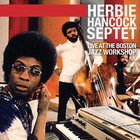
Live At The Boston Jazz Workshop
- Year:
- 2015
- Tracks:
- 2
- Bitrate:
- 320 kbps
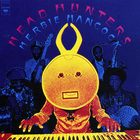
The Perfect Jazz Collection: Head Hunters
- Year:
- 2010
- Tracks:
- 4
- Bitrate:
- 320 kbps
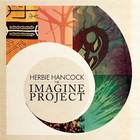
The Imagine Project
- Year:
- 2010
- Tracks:
- 10
- Bitrate:
- 320 kbps

Then And Now: The Definitive Herbie Hancock
- Year:
- 2008
- Tracks:
- 13
- Bitrate:
- 320 kbps

River: The Joni Letters
- Year:
- 2007
- Tracks:
- 11
- Bitrate:
- 320 kbps
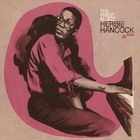
The Finest In Jazz
- Year:
- 2007
- Tracks:
- 6
- Bitrate:
- 320 kbps
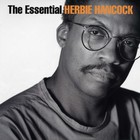
The Essential CD2
- Year:
- 2006
- Tracks:
- 10
- Bitrate:
- 320 kbps

AVO Session Basel (Live)
- Year:
- 2006
- Tracks:
- 6
- Bitrate:
- 185 kbps
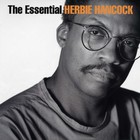
The Essential CD1
- Year:
- 2006
- Tracks:
- 10
- Bitrate:
- 320 kbps
 Chick Corea 89
Chick Corea 89 George Cables 15
George Cables 15 George Duke 38
George Duke 38 Joe Zawinul 17
Joe Zawinul 17 McCoy Tyner 65
McCoy Tyner 65 Ramsey Lewis 33
Ramsey Lewis 33 Abdullah Ibrahim 41
Abdullah Ibrahim 41 Andrew Hill 26
Andrew Hill 26 Keith Jarrett 128
Keith Jarrett 128 Larry Young 20
Larry Young 20 Miles Davis 286
Miles Davis 286 Mulgrew Miller 12
Mulgrew Miller 12 Oscar Peterson 106
Oscar Peterson 106 Phineas Newborn Jr. 8
Phineas Newborn Jr. 8 Bill Evans 132
Bill Evans 132 Dave Brubeck 71
Dave Brubeck 71 Michel Petrucciani 35
Michel Petrucciani 35 Robert Glasper 15
Robert Glasper 15 Stanley Cowell 15
Stanley Cowell 15 Billy Cobham 56
Billy Cobham 56 Tal Wilkenfeld 2
Tal Wilkenfeld 2 Weather Report 43
Weather Report 43 Ahmad Jamal 69
Ahmad Jamal 69 George Russell 20
George Russell 20 Jimmy Smith 103
Jimmy Smith 103 Lonnie Liston Smith 20
Lonnie Liston Smith 20 The Headhunters 3
The Headhunters 3